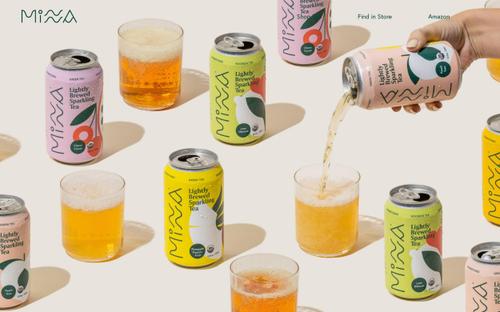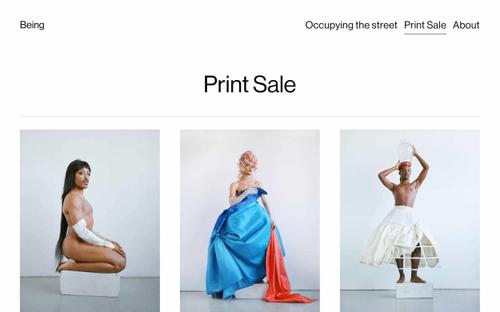Discover and grow your audience with the checklists in our free guide.
The email you entered is invalid.
Thank you for subscribing.
By entering your email, you indicate that you have read and understood our Privacy Policy and agree to receive marketing from Squarespace.
If you’ve ever wondered why certain brands seem to be everywhere—on your social feeds, in search results, or in casual conversations—it isn’t luck. It’s the result of intentional brand awareness strategies. As AI-powered search reshapes how people discover businesses, brand awareness has become more important than ever.
Awareness is about building familiarity and trust so that when your audience thinks of a product, service, or idea, your brand comes to mind first.
Read on to learn the basics of brand awareness and practical strategies you can use right away: what brand awareness is, why it matters for long-term growth, and how to build and measure it across channels.
What is brand awareness?
Brand awareness is the degree to which people recognize and remember your brand. When someone says the word “pizza,” what brand comes to mind? Is it a major chain or your local pizza joint? The brand that would come to mind for more people has stronger brand awareness.
Measuring brand awareness goes beyond someone remembering your business name and logo. It’s more about the associations people make with your brand, the feelings they get when they see it, and whether you’re top-of-mind when it’s time to make a purchase.
Brand awareness has three layers:
Recognition: A potential customer can identify your brand among the crowd (like spotting your logo).
Recall: Your brand comes to mind unprompted when they think of your category.
Association: The mental connections associated with your brand (“eco-friendly,” “reliable,” “fun”).
Keep in mind awareness is not the same as engagement, like social media likes or email opens, or conversion, like sales. Someone may know your brand exists but never buy from you. Still, awareness creates a foundation of trust, credibility, and loyalty that makes someone more likely to choose you over another brand.
Why brand awareness matters
To grow a business, you need a natural flow of new customers in addition to returning customers. Brand awareness is key to keep that flow going.
Think of brand awareness as a functional tool for your business that:
Fuels discoverability: Recognition begets recognition. Whether through word-of-mouth, search, social media, or AI, your brand is more likely to appear if people already recognize and engage with it.
Builds credibility and trust: Familiarity reduces skepticism. Even slight recognition makes a business feel more trustworthy.
Creates preference and loyalty: Repeated exposure builds preference. People will often choose a familiar name over an unknown option.
Supports long-term growth: Consistent awareness compounds. Each touchpoint strengthens recognition, making future marketing efforts more effective.
Awareness fuels action. For example, a jewelry maker who posts regularly, collaborates with influencers, and sends a monthly newsletter will become more visible to both search platforms and customers over time. Within a year, shoppers may not only be more likely to buy, but also more likely to tag the brand, recommend it to their friends, and search for it by name. Those interactions create a loop that feeds search and AI, surfacing the jewelry brand to more potential customers.
How to build awareness for your brand
Brand awareness is an ongoing practice, and one that should evolve as your business or brand does. Make the strategies below part of your regular marketing activities to keep awareness growing.
1. Know your brand identity
The first step is understanding your brand. Before you can increase awareness, you need to clarify what your brand stands for. Without a solid brand identity, what you put out will be confusing or hard to tie back to your brand. For example, if your website feels polished but your social content feels sloppy, customers might not connect the two.
The core elements of your brand identity include:
Mission and values: Why you exist and what you stand for
Visual identity: Logos, colors, typography, and design
Voice: The tone and style of communication
Positioning: What sets you apart from competitors
Be aware of how these elements work together to form an impression of your brand. Your actions should model and reinforce them on a consistent basis. Consistency across touchpoints makes your brand easier to remember and harder to ignore.
Try this: Write a two-sentence mission, list three to five values, and define your brand voice in three adjectives. Collect your logo, fonts, and colors into a brand kit. Refer to these things consistently over time to keep your branding consistent.
2. Build a strong online presence
Once your brand identity is clear, the next step is making sure people can actually find you. Your online presence is often the first—and sometimes only—interaction a potential customer has with your brand. A strong, consistent presence creates familiarity, credibility, and discoverability.
Website
Your website is the cornerstone of your online presence. It’s where you have full control over your message, visuals, and user experience. Social platforms come and go, but your website is a space you control. At a minimum, make sure your site:
Clearly communicates who you are and what you do
Reflects your brand identity (mission, values, visuals, tone)
Is optimized for mobile—over half of all web traffic now comes from phones
Loads quickly and is easy to navigate
Social media
Not every platform will be right for your business. The key is to choose the ones where your audience is most active and where the format suits what you want to share. For example: Instagram, TikTok, or Pinterest are good starting points for visual and lifestyle brands. Meanwhile, LinkedIn is often the right place for B2B services or professional branding.
Consistency across platforms matters. Use the same logo, bio style, and voice so that each profile strengthens recognition.
Read our guide to creating a social media strategy
Search and AI
Search engines and AI-powered platforms are where people go to find answers and compare products or services. Optimizing your website and social content helps ensure your brand surfaces at the right moment in those channels. Focus on:
Branded searches: Make sure your name, product, or service is easy to find and spelled consistently.
Basic SEO: Use keywords your audience would search for, especially long-tail terms like “organic coffee shop in Cleveland.”
Local listings: Keep Google Business, Yelp, and other directories up to date if you serve a local community.
AIO practices: Encourage mentions of your brand off of your website, like forums, review sites, and other brands’ sites.
As search engines and AI assistants pull from a wide range of online sources, having clear, consistent information across your site, socials, and listings helps reinforce your authority and
See our beginner’s guide to AI search optimization
3. Build a community
Brand awareness isn’t built only through polished websites and fancy marketing. It also grows when people feel a personal connection with your brand. Community engagement creates the kind of familiarity and trust that makes your business memorable. The strongest and most lasting businesses invest in building a community around their brands.
Email campaigns: Email is still one of the best awareness tools. It bypasses algorithms and goes straight to your audience. Share tips, updates, and resources on a steady schedule.
Online communities: Join online communities where your potential customers hang out online. Be sure to participate genuinely, like a real person, and don’t just promote yourself.
Face-to-face engagement: Perhaps the most powerful tool for brand awareness is getting people together in person. Workshops, pop-ups, meetups, and networking all deepen awareness and create word-of-mouth growth.
Content creation and distribution: Content is another strong driver of awareness. Blog posts, short videos, podcasts, and downloadable material help build your credibility and fuel long-term visibility.
When engaging and creating content, balance evergreen topics, like long-lasting guides with timely content on trends and seasonal topics. You can also repurpose your content in various formats across your community touchpoints. For example, a blog post can be turned into social posts, a newsletter, and a short video. Repurposing meets customers where they are and helps you save time.
4. Activate your amplifiers
You don’t have to build brand awareness alone. One of the most effective ways to expand your reach is by tapping into amplifiers, the people and partners who are excited to spread your message to new audiences.
Influencers: For small businesses, working with micro-influencers with smaller but highly engaged followings can be more effective and affordable. Their audiences often trust their recommendations, making them powerful brand advocates.
Loyal customers: Your happiest customers are natural amplifiers. Encourage them to share their experiences by creating a referral program or loyalty rewards, highlighting user-generated content on your social feeds, or simply asking for testimonials and shares.
Partners and peers: Look for opportunities to collaborate with peers or complementary businesses. These collaborations help you “borrow” each other’s audiences while adding value. For example: a local coffee shop co-hosting an event with a nearby bookstore, a digital illustrator teaming up with a copywriter, or appearing on podcasts or webinars in your niche.
How to measure brand awareness
Building awareness is important, but how do you know if it’s working? Unlike sales or conversions, awareness can feel harder to measure because it’s about visibility and perception. Still, there are clear metrics and tools to help you track progress over time.
There are some key metrics that you can usually connect to brand awareness:
Direct traffic: When people type your URL directly into their browser, it shows they already know your brand. You can usually find this in your website analytics.
Branded search volume: Track how often people search for your brand name or products. Tools like Google Search Console can help.
Social mentions and engagement: Look at how often your brand is tagged, shared, or discussed. Engagement rates (likes, comments, shares) also indicate awareness growth.
Newsletter sign-ups: A growing subscriber list suggests more people are not just aware of you but want to stay connected.
Media mentions or backlinks: Being featured in articles, blogs, or podcasts signals your brand is becoming part of the conversation.
Brand awareness is what makes your business recognizable, memorable, and trusted. Awareness is like gardening—you plant, water, and nurture it over time. Start small and show up consistently and authentically. Audit your website, post weekly content, or launch a newsletter. Over time, these steps can compound into the brand awareness that makes your brand the one people remember and trust.



